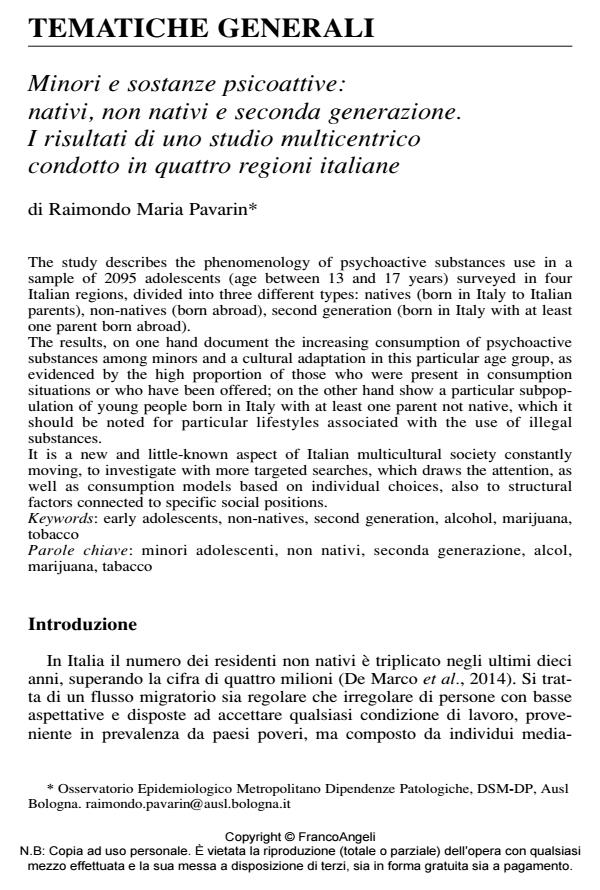Minori e sostanze psicoattive: nativi, non nativi e seconda generazione. I risultati di uno studio multicentrico condotto in quattro regioni italiane
Titolo Rivista SALUTE E SOCIETÀ
Autori/Curatori Raimondo Pavarin
Anno di pubblicazione 2014 Fascicolo 2014/3
Lingua Italiano Numero pagine 13 P. 181-193 Dimensione file 613 KB
DOI 10.3280/SES2014-003015
Il DOI è il codice a barre della proprietà intellettuale: per saperne di più
clicca qui
Qui sotto puoi vedere in anteprima la prima pagina di questo articolo.
Se questo articolo ti interessa, lo puoi acquistare (e scaricare in formato pdf) seguendo le facili indicazioni per acquistare il download credit. Acquista Download Credits per scaricare questo Articolo in formato PDF

FrancoAngeli è membro della Publishers International Linking Association, Inc (PILA)associazione indipendente e non profit per facilitare (attraverso i servizi tecnologici implementati da CrossRef.org) l’accesso degli studiosi ai contenuti digitali nelle pubblicazioni professionali e scientifiche
The study describes the phenomenology of psychoactive substances use in a sample of 2095 adolescents (age between 13 and 17 years) surveyed in four Italian regions, divided into three different types: natives (born in Italy to Italian parents), non-natives (born abroad), second generation (born in Italy with at least one parent born abroad). The results, on one hand document the increasing consumption of psychoactive substances among minors and a cultural adaptation in this particular age group, as evidenced by the high proportion of those who were present in consumption situations or who have been offered; on the other hand show a particular subpopulation of young people born in Italy with at least one parent not native, which it should be noted for particular lifestyles associated with the use of illegal substances. It is a new and little-known aspect of Italian multicultural society constantly moving, to investigate with more targeted searches, which draws the attention, as well as consumption models based on individual choices, also to structural factors connected to specific social positions.
Parole chiave:Minori adolescenti, non nativi, seconda generazione, alcol, marijuana, tabacco
Raimondo Pavarin, Minori e sostanze psicoattive: nativi, non nativi e seconda generazione. I risultati di uno studio multicentrico condotto in quattro regioni italiane in "SALUTE E SOCIETÀ" 3/2014, pp 181-193, DOI: 10.3280/SES2014-003015